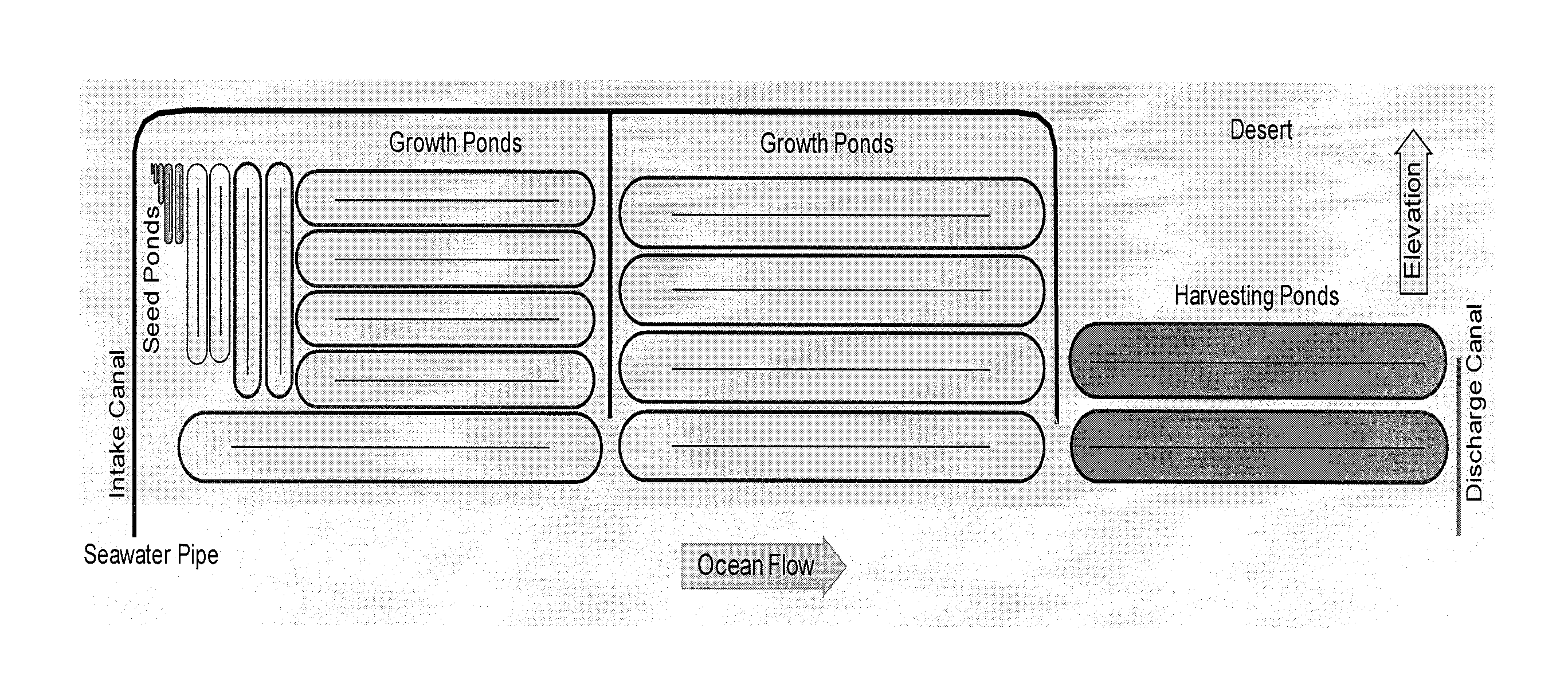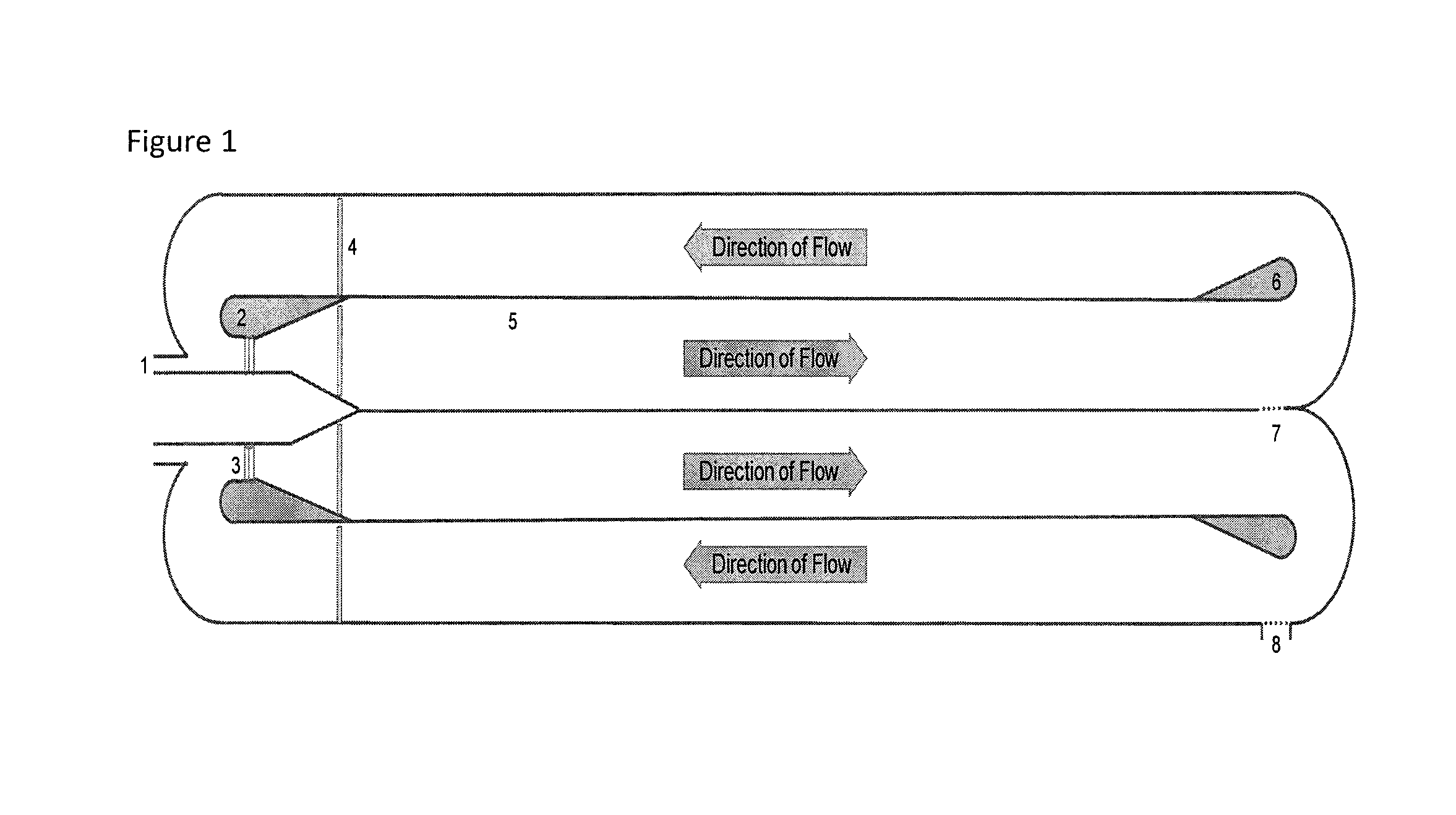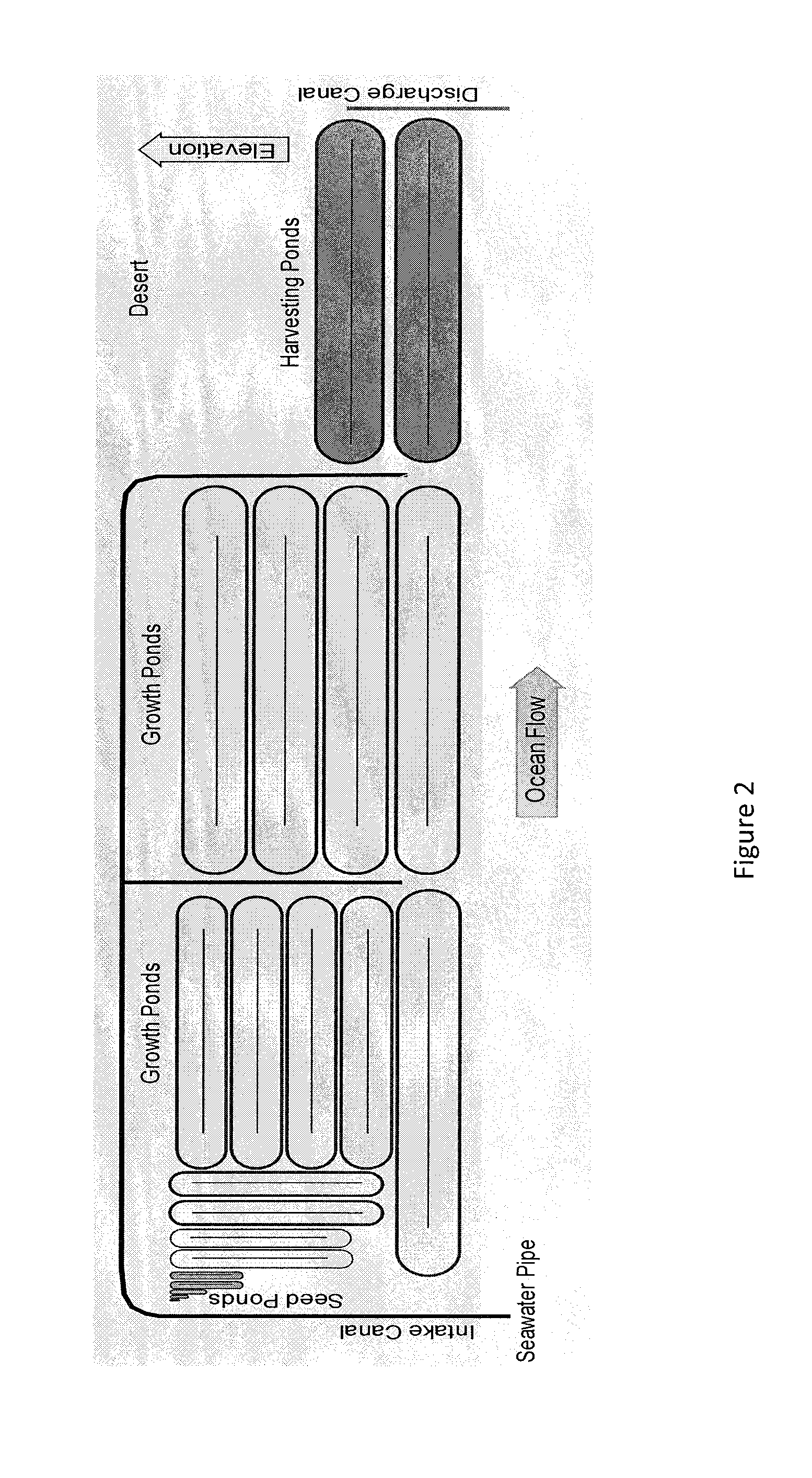Method of culturing algae
a technology of algae and culturing method, which is applied in the field of culturing algae, can solve the problems of preventing the mass culture of algae in raceway ponds from being commercially viable, affecting the growth rate of algae and biomass yield, and reducing the yield of alga
- Summary
- Abstract
- Description
- Claims
- Application Information
AI Technical Summary
Benefits of technology
Problems solved by technology
Method used
Image
Examples
example
Model Layout
[0153]FIG. 2 illustrates the layout of a specific algal cultivation system of the invention, including the seawater pipe that is used to fill an elevated seawater canal. This seawater canal feeds a series of raceway ponds. Each pond has a connection to at least the elevated seawater canal and a lower lying subsequent pond through a gate controlled sluice pond discharge. The series of ponds commences with small covered seed ponds to grow the inoculums. Each subsequent pond has at least twice the capacity of the previous pond to hold the entirety of the volume of the previous pond and the equivalent volume of unused seawater. The layout in FIG. 2 has two stages with four channels including the “return channel”). One set of raceway pond with eight channels, including the “return channel, and one set with 10 channels including the “return channels”. This final set drains into two large and deep harvesting ponds with a total of four channels. The advantage of this oblong layo...
PUM
| Property | Measurement | Unit |
|---|---|---|
| volume | aaaaa | aaaaa |
| volume | aaaaa | aaaaa |
| volume | aaaaa | aaaaa |
Abstract
Description
Claims
Application Information
 Login to View More
Login to View More - R&D
- Intellectual Property
- Life Sciences
- Materials
- Tech Scout
- Unparalleled Data Quality
- Higher Quality Content
- 60% Fewer Hallucinations
Browse by: Latest US Patents, China's latest patents, Technical Efficacy Thesaurus, Application Domain, Technology Topic, Popular Technical Reports.
© 2025 PatSnap. All rights reserved.Legal|Privacy policy|Modern Slavery Act Transparency Statement|Sitemap|About US| Contact US: help@patsnap.com



